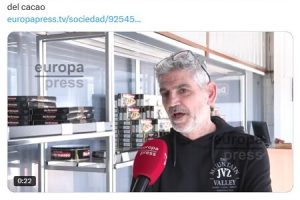Scientists have devised a way to convert ammonia into hydrogen (very useful in the field of clean energy) and nitrite (a precursor to fertilizers) using a new catalyst.
The achievement is the work of a team led by Ieva A. Cechanaviciute of Ruhr University in Bochum, Germany (RUB).
Until now, hydrogen production and fertiliser production were separate chemical processes. With the new approach, the team demonstrates that both activities can be combined – for now only on a laboratory scale, but foreseeably on an industrial scale in the future.
Hydrogen can be produced by splitting water (H2O) into hydrogen (H2) and oxygen (O2) using electrical energy. For this process to be sustainable, the energy must come from renewable sources. “This can only be done in a country where there is plenty of space for wind power and plenty of sun for photovoltaics, for example in Namibia,” explains Wolfgang Schuhmann from the Ruhr University in Bochum and member of the research team.
In order to implement a hydrogen-based economy in countries like Germany, hydrogen must be imported from far away. The problem is that it takes a lot of energy to liquefy hydrogen for transport, as it only becomes liquid at extremely low temperatures of minus 253 degrees Celsius or at high pressures.
Ammonia is easier to transport than hydrogen, as it becomes liquid at minus 33 degrees Celsius.
It also has a higher energy density. A tanker truck filled with liquid ammonia would carry 2.5 times more energy than a tanker truck filled with liquid hydrogen.
Finally, the ammonia would have to be converted back to hydrogen at the point of use. This is usually done by the reverse Haber-Bosch reaction, where ammonia (NH3) is converted to nitrogen (N2) and hydrogen (H2). However, of the two products, only hydrogen is commercially useful.
Ieva Cechanaviciute. (Photo: RUB, Marquard)
“That’s why we had the idea of combining the reverse Haber-Bosch reaction with a second electrolysis of water to obtain a product that could easily be used for the production of fertilisers, such as nitrite or nitrate, instead of nitrogen,” explains Cechanaviciute. In this reaction, ammonia (NH3) and water (H2O) are consumed to produce nitrite (NO2-) and hydrogen (H2). Unlike the reverse Haber-Bosch reaction, hydrogen production is doubled and instead of unusable nitrogen, mainly nitrite is produced, which can be transformed into fertiliser.
Cechanaviciute and his colleagues present the technical details of their breakthrough in the academic journal Angewandte Chemie International Edition, under the title “Gas Diffusion Electrodes for Electrocatalytic Oxidation of Gaseous Ammonia: Stepping Over the Nitrogen Energy Canyon”. (Source: NCYT by Amazings)





![[Img #74683]](https://thelatestnews.world/wp-content/uploads/2024/12/The-main-mistakes-to-avoid-when-betting-on-electronic-sports-150x150.jpg)






![[Img #73169]](https://thelatestnews.world/wp-content/uploads/2024/07/Producing-hydrogen-and-fertilizer-at-the-same-time.jpg)
![[Img #74683]](https://thelatestnews.world/wp-content/uploads/2024/12/The-main-mistakes-to-avoid-when-betting-on-electronic-sports-300x200.jpg)


Add Comment